#emergency! 1972
Explore tagged Tumblr posts
Text

#k last one i promise#amboolents originals#art#amboolents art#emergency! 1972#emergency!#randy mantooth#randolph mantooth#johnny gage#john gage#boot the dog#retro tv#vintage tv shows
27 notes
·
View notes
Note
For the E! Ask Game. I would like to know your answers for #4 and #11, please!
4 This is a tough one. There's so many amazing rescue scenes. I would have to say my favorite, though, is when Roy and Johnny are on tether together and the tether breaks and Johnny tries (foolishly) to go in after him despite his lack of equipment. I love the stakes of that scene and I love how Cap scruffs Johnny to keep him from doing something dumb.
11 This one's much easier! I love Chet. Outside the main cast, he's my favorite character by far. I think he has so much to offer the show and I love his relationship with Johnny.
1 note
·
View note
Text
I would love to talk about some of these!!
I am bored and have nothing better to do so enjoy this E! ask game I came up with
Who's your favorite character?
Favorite episode? (Yes, feel free to mention multiple)
Least favorite episode?
Favorite rescue?
Something you wish the show had done differently?
Favorite bit of trivia from the show?
Favorite headcanon? (Can either be yours or someone else's)
Favorite movie? (Yes, even if you dislike them lol)
Do you prefer the old engine 51 or the new engine 51?
Opinion on the attempted Brackett/Dixie romance?
A character you wish got more love?
Favorite season?
Any E! fics you would recommend?
Which season of Johnny hair is your favorite?
Opinion on Johnny's Infamous Patchwork Pants?
Was there a patient death that hit you really hard?
Favorite non-rescue scene?
Freebie: ask whatever you want
12 notes
·
View notes
Text
So I started watching Emergency after seeing everyone’s posts on here (I didn’t even know it EXISTED before now and that’s saying something, I love my vintage action shows). Why did nobody tell me how GROOVY the music in this show is??

Me every episode I swear ^^^
#emergency#emergency!#70s#I just finished season 2#also John travolta shows up??#it’s only 1972 he’s practically a baby in it#also it’s funny because one of the main characters has my name so I have that reflex of like ‘oh that’s me!!’
9 notes
·
View notes
Text
.
#i may have stayed up til dawn#but i started a killer#big band#arrangement of#nelson riddle's#theme from#emergency! (1972-7)#if you're in the discord with me#i posted a demo
5 notes
·
View notes
Text
If I vague post about Emergency! (1972) will anyone find it funny
#emergency! (1972)#<i just made that tag up so probably not. but if ur out there. if ur out tjere..#andy.txt
0 notes
Text

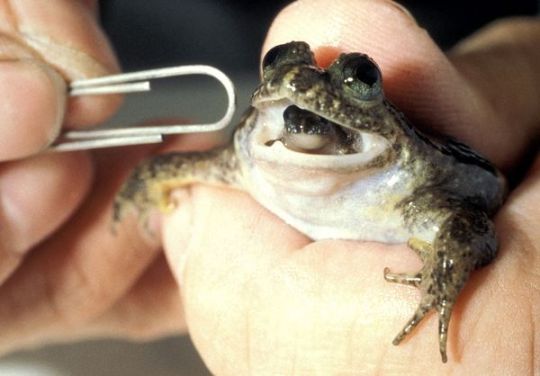
Southern Gastric Brooding Frog (Rheobatrachus silus), family Myobtrachidae, found in the Blackall Range and Conondale Ranges in southeast Queensland, north of Brisbane, Australia
EXTINCT.
First discovered by western science in 1972 (possibly 1914), the last wild specimen was encountered in 1981, and the last captive specimen died in 1983.
The cause(s) for decline and extinction are unclear, but may include introduced species, habitat degradation, and the Chyrtrid fungus.
There is a project currently working to clone this frog. They have only been successful, so far, in cloning an embryo.
Females would swallow fertilized eggs, and brood them and tadpoles in her stomach. The metamorphosed froglets would emerge from her mouth later on.
There is considerable disagreement as to which family they should be included in (with some herpetologists putting the 2 species of Rheobatrachus into their own family).
photographs by AU Images and Michael Tyler
#gastric brooding frog#frog#amphibian#rheobtrachus#myobatrachidae#herpetology#animals#nature#australia
1K notes
·
View notes
Text

I have made some Welsh LGBTQ+ Prints!
P'nawn da! Today is the day I'm finally launching my Welsh LGBTQ+ prints for sale (find them here). Like with my dissertation, they're pay as you feel (min. £2 plus postage) and I can post them to the UK, US, EU and Canada! Designs include the 2017 Gilbert Baker flag with the stripe meanings in Welsh and English, the map of Wales featuring my pride redesigns of the historic county flags of Wales, lesbian redesign of the Cardiff flag and a brand new design featuring 12 pride flags with the names of each in Welsh and English. I have 5 of each print in stock!
If you're new here or didn't know, unfortunately I experienced several major life changes this year which have really affected my finances (hospitalisation, long term relationship ended, emergency house move, job loss due to employer discrimination and a family member diagnosed with a terminal illness. For more details see this post). In order to help support myself I'm offering these prints for sale while I search for a new part time job. At the time of writing, I only have enough money in savings to cover 2 more months of rent and bills (not including food), so anything you can spare will help me afford food and keep doing what I love. I also have a patreon if you want to support me there.
I have also got my 47-page undergraduate dissertation on the development of Welsh-language terminology between 1972 and 2022 available here as pay as you feel (even £1!). Any support is hugely, hugely appreciated.
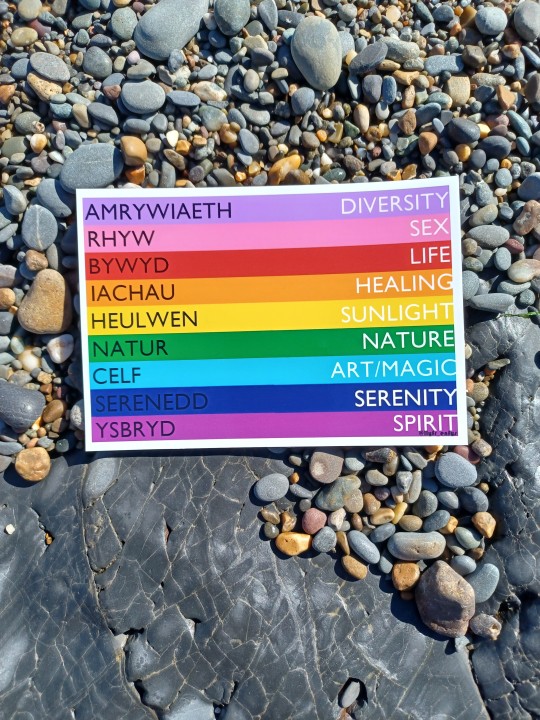



#cymraeg#welsh#cymblr#lhdt#cymru#prints#cardiff#caerdydd#county flags#hoyw#lesbiaidd#deurywiol#trawsryweddol#please share this if you are able#diolch!#lleshop
332 notes
·
View notes
Text

1972 Chevrolet Corvette
The 1972 Chevrolet Corvette occupies a unique space in Corvette history. Representing a transitional year, it embodied the classic Corvette design enthusiasts know and love, while adapting to the emerging environmental regulations of the era.
Performance with Refinement:
While earlier Corvettes were renowned for their unbridled horsepower, the 1972 model reflected a shift towards a more balanced approach. A new SAE net rating system, implemented due to stricter emission controls, replaced the previous SAE gross horsepower ratings. The base engine, a 350 cubic inch V8, produced 255 horsepower (SAE net). For drivers seeking a sportier experience, the optional LT-1 offered the same engine displacement but with a focus on higher performance, also rated at 255 horsepower (SAE net). A 4-speed manual transmission remained standard, with a smooth Turbo Hydra-Matic automatic available for those who preferred a more comfortable driving experience.
**A Farewell to Chrome:**
The 1972 Corvette marked the final year for the car's iconic chrome bumpers. Subsequent models would adopt integrated bumpers to comply with evolving safety standards. This detail adds a touch of historical significance to the 1972 model for collectors who appreciate the car's place in Corvette's design lineage.
**Enduring Style:**
Despite the horsepower adjustments, the 1972 Corvette retained the classic Corvette silhouette that has captivated generations. Offered with a retractable fiberglass hardtop or a removable convertible top, the car continued to deliver the open-air exhilaration Corvette enthusiasts crave. Customization options like a tilt and telescopic steering wheel further enhanced the driving experience.
**A Collectible for the Discerning:**
The 1972 Corvette, particularly the LT-1 variant, holds a special place in the hearts of collectors. While horsepower figures may not match those of earlier models, the car represents a significant chapter in Corvette's evolution and offers a unique blend of classic design and historical significance. The value of a 1972 Corvette can vary depending on factors like condition, mileage, and options.
421 notes
·
View notes
Text


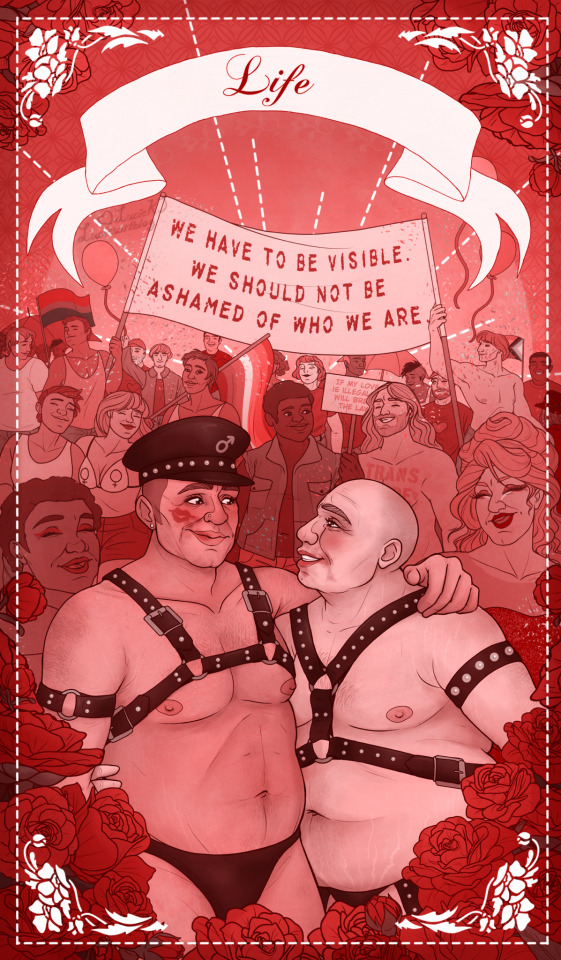

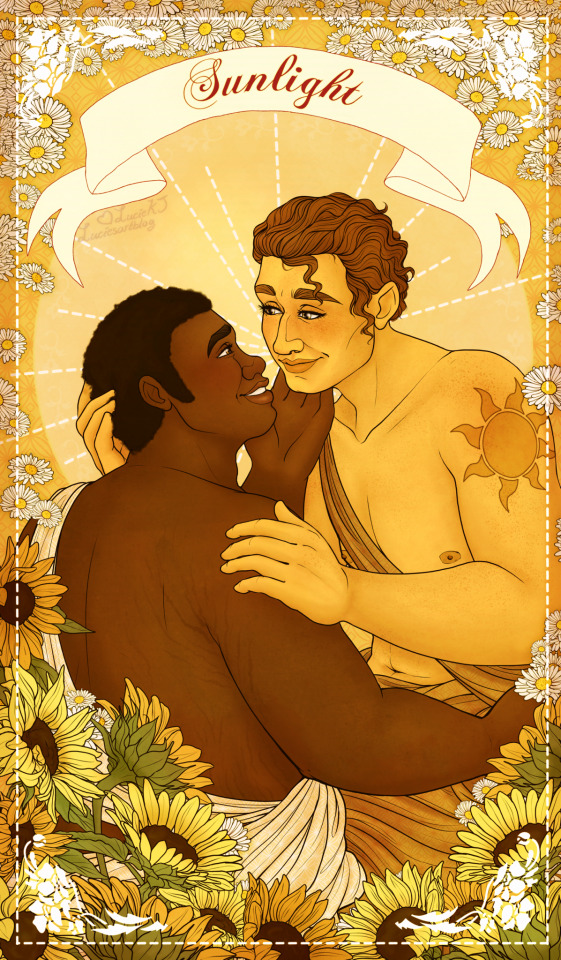


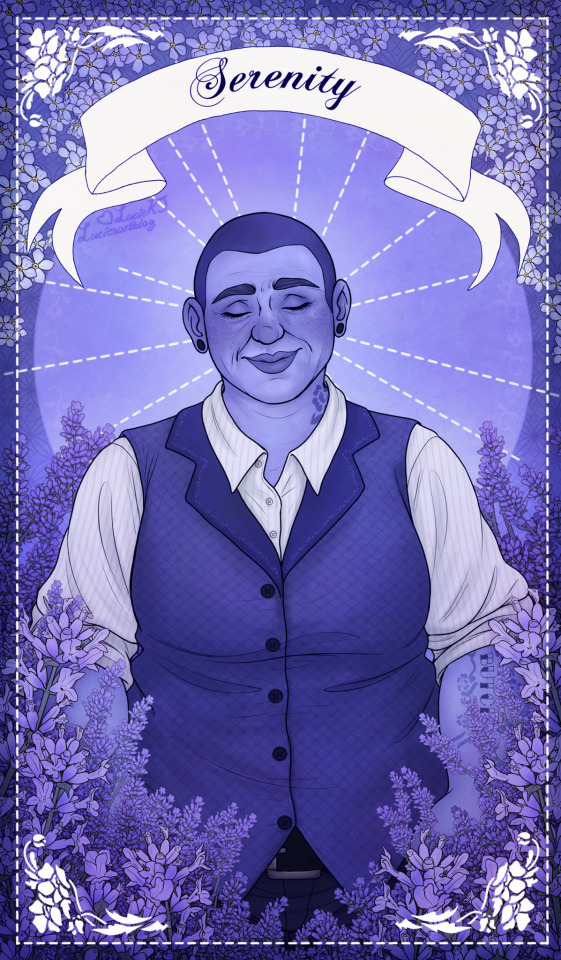

Gilbert Baker (June 2, 1951 - March 31, 2017) was a gay American artist, designer and activist, best known as the primary creator of the rainbow flag. In 1972 Baker was living in Chicago as an openly gay man, he was taught to sew by a fellow activist, Mary Dunn, using these skills to create banners for gay-rights and anti-war protest marches. It was also during this time that he met and became friends with Harvey Milk, an influential gay leader, who challenged Baker to create a new symbol of pride for the gay community.
The first rainbow flags were produced by a team that included Baker, seamster James McNamara and artist Lynn Segerblom. Segerblom, who was then known as Faerie Argyle Rainbow, reports to have created the original dyeing process for the flags. Thirty volunteers hand-dyed and stitched the first two flags for the parade. These original flags flew at the San Francisco Gay Freedom Day Parade celebration on June 25, 1978.
Though many variations have emerged in the decades since, the original design had eight stripes, with a specific meaning assigned to each of the colours: Hot pink for “sex”, red for “life”, orange for “healing”, yellow for “sunlight”, green for “nature”, turquoise for “magic” (though sometimes given as “art”?), indigo for “serenity” and violet for “spirit”.
I’m a little late for pride month, but I got all this done a lot quicker than I expected considering I only started working on it at the beginning of June (though I’ve been planning it on and off for a few years now😅). I did a lot of research and planning for each piece, and there was a lot I wanted to communicate with the project as a whole - it’s been a lot of work, and I challenged myself with a bunch of stuff I’m not familiar with, but I’m really happy with how everything turned out.
Happy pride, everyone, here’s to our community, to all the work that got us here, and to all the progress still to come! 🏳️🌈✨🏳️⚧️
#pride month#gay pride#lgbt pride#lgbt art#trans pride#queer pride#nonbinary pride#lesbian pride#wlw pride#lesbian art#lgbtq positivity#lgbt history#artists on tumblr#queer artists#lgbt artists#queer artist#enby artist#bisexual art#bisexual pride#bisexual artist#trans art#trans positivity#my art
2K notes
·
View notes
Text

Happy ace week!
This 1973 picture shows lesbian activists at Barnard College in New York suggesting a whole list of labels for people to choose from - including asexual!
This picture gives us a tiny bit of insight into conversations that were going on the 1970s in lesbian feminist circles, where 'asexual' was emerging as a term to describe people who either didn't feel sexual attraction, or who made the political choice not to focus their lives and relationships around sex.
The way 'asexuality' was spoken about then doesn't quite align with how we talk about it today - with the 21st century focus being much more on individual experience of sexuality than on political choice; but nonetheless these conversations in the 1970s start to give us some insight into the modern history of asexuality as an identity.
Check out our podcast on the 1972 Asexual Manifesto if you'd like to learn more!
[Image: ‘Lesbian activists at Barnard provide labels’, Off Our Backs vol. 3 no. 6 Feb/Mar 1973]
#ace week#ace awareness week#asexuality#queer history#ace history#asexual awareness week#asexual history#lgbt#lgbtq#queer
210 notes
·
View notes
Text

#they’re not canon but they SHOULD BE#amboolents originals#art#amboolents art#emergency!#emergency! 1972#roy desoto#roy de soto#wait hold up i genuinely don’t know if it’s de soto or desoto#dixie mccall#randolph mantooth#randy mantooth#julie london#kevin tighe
21 notes
·
View notes
Text
As president of the United States, Donald Trump threatened the federally issued licenses of television broadcast outlets that displeased him. In 2017, after NBC News reported a dispute between the president and his military advisors about the size of the nuclear arsenal, the president launched a series of tweets:
These 2017 tweets did not specifically suggest that he would have the Federal Communications Commission (FCC), which issues the airwave licenses, revoke them on his order. Instead, they appear to echo the 1972 tactics of Richard Nixon, who, displeased by coverage from the Washington Post, encouraged a third party to file a challenge at the FCC (which ultimately went nowhere).
In response to the 2017 tweets, the Trump-appointed chairman of the FCC, Ajit Pai, took a firm stand. “I believe in the First Amendment,” he said. “Under the law, the FCC does not have the authority to revoke a license of a broadcast station based on a particular newscast.”
Now, in 2024, as a presidential candidate, Donald Trump has reasserted that broadcasters who displease him should lose their federal airwave licenses. A September 2023 post on Truth Social accused NBC of “Country Threatening Treason.” He added, “Why should NBC, or any of the other corrupt & dishonest media companies, be entitled to use the very valuable Airwaves of the USA, FREE?”
The current Chair of the FCC, Jessica Rosenworcel, responded, “the First Amendment is a cornerstone of our democracy. The FCC does not and will not revoke licenses for broadcast stations simply because a political candidate disagrees with or dislikes content or coverage.”
However, the ability of future FCCs to stand up to such instructions could be at risk. Candidate Trump has promised, “I will bring the independent regulatory agencies, such as the FCC and the FTC, back under Presidential authority, as the Constitution demands.” While the Constitution never mentions regulatory agencies, bringing the FCC under direct presidential control would surely undercut its independent decision-making.
But a president of the United States already has powers beyond coercing the FCC. These powers could be exercised not only against broadcasters, but also against those who operate the internet.
The “Doomsday Book”
During his presidency, Donald Trump asserted, “When somebody’s president of the United States, the authority is total.” Whether or not presidential authority is “total,” there does already exist a compendium of presidential powers that have been enacted by Congress for use in extreme circumstances.
Reportedly locked in a White House safe are the secret “Presidential Emergency Action Documents” (PEADs). Colloquially known as the “Doomsday Book,” they are a collection of powers authorized by Congress for the president to use in emergencies. Included in this compendium is Section 706 (codified as 47 USC 606), titled, “War Emergency – Powers of the President,” that is tucked away at the end of the Communications Act of 1934, the statute that created the FCC.
TIME Magazine reports, “When Donald Trump was in the Oval Office, members of the national security staff actively worked to keep him from learning the full extent of these interpretations of presidential authority, concerned he would abuse them.”
Here is what Section 706 authorizes:
(c) Upon proclamation by the President that there exists war or a threat of war, or a state of public peril or disaster or other national emergency… the President, if he deems it necessary in the interest of national security or defense, may suspend or amend, for such time as he may see fit, the rules and regulations applicable to any or all stations or devices capable of emitting electromagnetic radiations within the jurisdiction of the United States as prescribed by the Commission, and may cause the closing of any station for radio communication…
The next subsection, using similar “national security” criteria, gives the president authority over the wired networks, such as those that carry telephone and internet service. Section 706(d), in pertinent part, authorizes the president to “suspend or amend the rules and regulations applicable to any or all facilities or stations for wire communication… cause the closing of any facility or station for wire communication… [or] authorize the use or control of any such facility or station… by any department of the Government under such regulations as he may prescribe…”
The terms “war or a threat of war, or a state of public peril or disaster or other national emergency” are not defined by the Communications Act. Such declarations of national emergency were, however, a go-to solution when Donald Trump was in office. The effort to restrict travel from majority-Muslim countries was justified on national security grounds. Tariffs were levied on foreign steel and aluminum as a national security threat based on their impact on domestic production. When Congress would not give him the funding he wanted for the Mexican border wall, the president simply used a national emergency declaration to reallocate Defense Department funds to build the wall. Reportedly, he even considered declaring that the use of natural gas for electricity production was a national security risk because the gas pipelines could become terrorist targets.
The power of the Chief
Candidate Trump, in September 2023, posted that NBC and other “corrupt & dishonest media companies” are “a true threat to democracy and are, in fact, THE ENEMY OF THE PEOPLE!” He declared, “The Fake News Media should pay a big price for what they have done to our once great Country.”
A 2021 report by the nonpartisan Congressional Research Service (CRS) concluded, “in the American governmental experience, the exercise of emergency powers has been somewhat dependent on the Chief Executive’s view of the presidential office.” When he was Chief Executive, Donald Trump explained how he viewed the office: “I have Article II [of the Constitution], where I have the right to do whatever I want as president.”
The tools to do whatever the president wants—whether at the FCC or in the Doomsday Book—are at hand. As the CRS report concluded, such decisions are dependent “on the Chief Executive’s view of the presidential office.”
The institution that created these broad powers, the Congress, has an important role as overseer of the authority they have delegated to the executive. Congress constantly holds oversight hearings on the agencies of the executive branch; hearings on the unilateral powers granted to the president are warranted. The threshold question for such hearings should be whether there are sufficient guardrails in place to protect against their abuse, and what such protections should look like. Regardless of who wins the election—Congress should review whether the unilateral powers granted to the president in the 20th century need updating for the 21st century.
140 notes
·
View notes
Text
Over the Years | e.m x reader [18+] | p. 1
-> The origin story of Eddie Munson, and how he fell in love with the worst person he possibly could - his best friend.
-> eddie munson x you (she/her)
-> friends to lovers, slow burn, angst
-> warnings - strong language, suggestive themes, smut [18+]
a/n - another short chapter, but please bare with me here.
-> <-
June 1972
Eddie Munson has taken your doll. Your precious princess with the silver tiara glued to the top of her head (because you lost the tiara once and you wailed for hours until your mom found it, and she decided to glue it to her head to keep this from happening again).
Never go past the porch. Your mom has repeated time and time again. So, you sit with your feet kicked out in your gingham dress that your mom insists you wear.
Across the trailer park, Eddie is counting down the minute until “blast-off.” Tying your doll to a toy rocket he got with his allowance from his uncle, he knows that this thing won’t go to Mars. Perhaps, a nice landing in the tree hanging above his house would be nice.
It would - until Uncle Wayne soils his plans.
“Eddie!” Uncle Wayne scolds with a newspaper rolled into a swatting weapon. Smacking Eddie upside the head, he warns, “you be nice to her and give her back that doll!”
Eddie huffs, “I wasn’t going to hurt it.”
“Why don’t we give her one of your toys to play with?” Wayne smirks knowing he’s about to win this tireless battle. “G.I. Joe would look pretty in a dress and a little makeover.”
“Ugh,” Eddie tears the strings that hold the princess doll hostage, “I’ll give the toy back. Jeez!”
“And apologize,” he sighs.
Eddie kicks the dirt below his feet and storms across to the trailer there. You’re a pain in his side. Blubbering about a doll? Really?
Wayne constantly reminds him that you’re younger. Actually, you’re about two years younger than Eddie. You can’t chase him around like he wishes. There’s not many kids his age in the trailer park, and the ones that are his age fear the Munson name.
You’re not sure you want to be friends with the boy who keeps taking your dolls to throw around. There isn’t much choice now that your mom has to work, and she’s handing you over to Wayne in the mornings. She offers him a list of emergency contacts, and warns him not to feed you too much sugar.
It’s then you’re left to play with the thief, who steals your dolls. And, for a while, Eddie ignores you. He digs in the dirt with a plastic shovel until he finds a slimy worm. Thinking this would be the perfect time to show you he’s in charge around here, Eddie grows a sly grin. He hovers over you, while you take a keen interest in the toy dump truck left in the sun. Dropping the worm onto your hair, you squeal and shake off the invading insect.
Despite his short victory, you’re now toying with the worm. Rolling the creature between your fingers, you find a nice spot of wet dirt for your friend to crawl around in. Muddy hands grasp at the legs of Eddie’s pants.
Wayne rolls in laughter from the porch. There hasn’t been a moment that Eddie has gone so mute. A shrunken look of dispare drops against his nephew’s face. Jutting out his lower lip, Eddie goes back into his corner to play in the dirt. It just so happens that Eddie’s crafted his own little mud pile, so he can fling a clump or two in your direction.
It isn’t until Wayne is done wiping the tears away from his eyes that he realizes what Eddie has done. Standing on his two feet, ready to scold his nephew, you’re actually too quick for him. You toss mud back.
Thus, a mud fight begins.
Mud in between your fingers and mud between your toes and maybe some mud even squeezes behind your ears.
Wayne waves his hands desperately trying to get the children to stop throwing mud at each other, but alas it is far too late. By the time he gets either of you wrangled, you’re dripping in muck and so is Eddie.
There’s no way he’s trusting either of you inside of his house in such a state. Wayne gathers a garden hose from his neighbor, who will just have to deal with it.
The older man makes sure the water won't freeze your skin, or cook you dry before holding the nozzle at your feet.
“Spin,” Wayne directs.
You wave your chubby little arms back and forth, before wobbling in a semi circle. Warm water douses your entire body. Still, mud manages to cling to the parts of you that Wayne doesn’t see. You’ll have a bath later in his house, and Wayne will offer you some of Eddie’s clothes that he’s outgrown.
During Eddie’s hose down, the young boy shakes and rattles like a wet dog. He flings a disastrous amount of dirt across the trailer park, and onto you and Wayne. Before he can wrap a towel around Eddie, the boy is weaving past him into the house so he can get to the shower first.
“Boys,” Wayne rolls his eyes.
You giggle at this.
“Oh, but you’re as pretty as a peach,” he tells you, “don’t worry. My nephew will come around.”
Wayne brings you inside, and has to help you bathe yourself off. At first, he lets you splash around in the water by yourself feeling a bit uncomfortable washing a young girl. When you discover the joy of throwing water outside of the shower, Wayne steps in to help you. He’s also there to wrap you in a towel, and he helps dress you.
Eddie has already claimed a comfortable spot on the couch. There’s a screeching car chase happening on the blaring television in front of you. This couldn’t possibly be what your mother would approve of you watching.
Wayne’s belly tightens.
“Ed-,” but he stops himself.
Bobbling around the carpeted living room, you squeeze around the shoes left in the middle of the floor. You’re reaching the edge of the sofa where Eddie is. Eddie breaks from the television to scoot forward to the edge of the couch. He puts his thumbs under your armpits and holds onto your chest tight as he lifts you onto the couch with him.
Eddie doesn’t really think you’ll scoot in so close to him. There’s plenty of room that even his uncle could fit between you two. But, you chase after him as he gets comfortable sunken into the cushions.
There’s a moment when the older boy freezes unsure how to handle another person in his space. His eyes go wide and stare a hole through your head. It’s curious your mom chose to put your hair in pigtails - anyone could tug at them. As tempting as that might be, Eddie resists the urge when the car on television crashes on the side of the road. You slap your hands together and laugh.
Wayne mutely coos at the two kids on the couch. Perhaps his nephew will have a real friend out of you one day. That would warm his heart.
“Uncle Wayne?” Eddie kicks his feet out.
“Yeah?” Wayne replies.
“Can we have popcorn?”
“Sure, kid."
-> <-
[Sep. 1974]
tags -> @leelei1980 @sheneedsrocknroll92
#eddie munson x female!reader#eddie munson#stranger things#stranger things imagine#eddie munson x reader#eddie munson imagine#eddie munson x you#eddie munson preference#eddie munson fic#stranger things fic
195 notes
·
View notes
Text
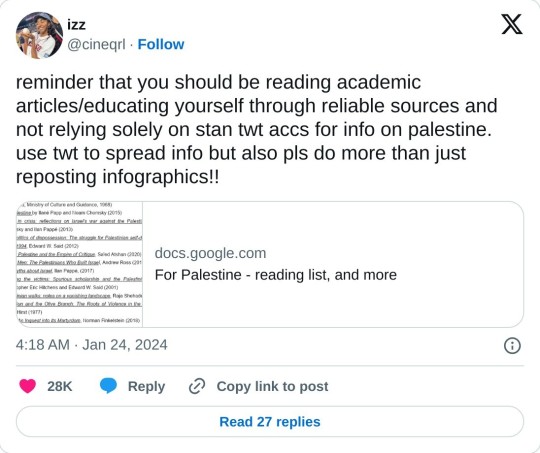
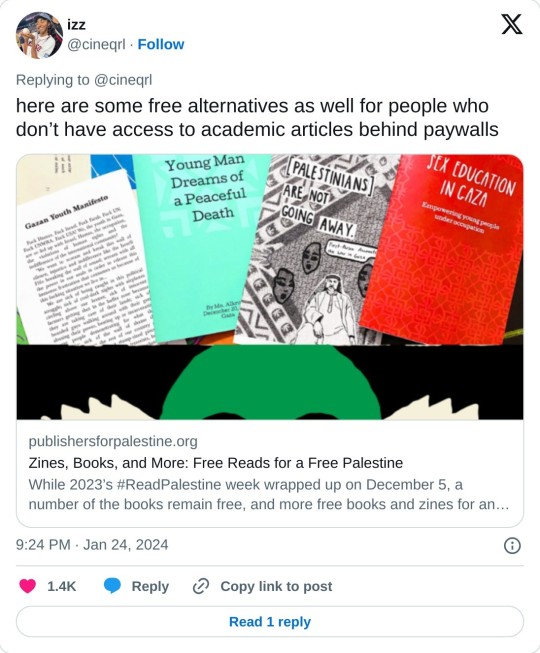
A copy of the first reading list, if you dislike clicking on Google docs links:
The liberal news media is working overtime to silence Palestinian voices. As we sit thousands of miles away, witnessing the massacre through social media, the least we can do is educate ourselves and work to educate others. Apartheid threatens all of us, and just to reiterate, anti-Zionism ≠ antisemitism.
Academic Works, Poetry and Memoirs
The Revolution of 1936-1939 in Palestine: Background, Details, and Analysis, Ghassan Kanafani (1972)
Palestinians: From Peasants to Revolutionaries, Rosemary Sayegh (1979)
Popular Resistance in Palestine: A History of Hope and Empowerment, Mazin Qumsiyeh (2011)
My Life in the PLO: The Inside Story of the Palestinian Struggle, Shafiq al-Hout and Jean Said Makdisi (2019)
My People Shall Live, Leila Khaled (1971)
Poetry of Resistance in Occupied Palestine, translated by Sulafa Hijjawi (Baghdad, Ministry of Culture and Guidance, 1968)
On Palestine by Ilan Pappé and Noam Chomsky (2015)
Gaza in Crisis: Reflections on the US-Israeli War Against the Palestinians, Noam Chomsky and Ilan Pappé (2013)
The Politics of Dispossession: The Struggle for Palestinian Self-Determination, 1969-1994, Edward W. Said (2012)
Queer Palestine and the Empire of Critique, Sa’ed Atshan (2020)
Stone Men: The Palestinians Who Built Israel, Andrew Ross (2019)
Ten Myths About Israel, Ilan Pappé (2017)
Blaming the Victims: Spurious Scholarship and the Palestinian Question, Christopher Eric Hitchens and Edward W. Said (2001)
Palestinian Walks: Notes on a Vanishing Landscape, Raja Shehadeh (2010)
The Gun and the Olive Branch: The Roots of Violence in the Middle East, David Hirst (1977)
Gaza: An Inquest into Its Martyrdom, Norman Finkelstein (2018)
Fateful Triangle: The United States, Israel and the Palestinians, Noam Chomsky (1983)
Israel and Palestine: Reappraisals, Revisions, Refutations, Avi Shlaim (2010)
Politicide: Ariel Sharon’s War Against the Palestinians, Baruch Kimmerling (2006)
The Holocaust Industry: Reflections on the Exploitation of Jewish Suffering, Norman G. Finkelstein (2015)
Light in Gaza: Writings Born of Fire, Jehad Abusalim (2022)
Nakba: Palestine, 1948, and the Claims of Memory, Ahmad H. Sa’di and Lila Abu-Lughod (2007)
Peace and its discontents: Essays on Palestine in the Middle East peace process, Edward W. Said (2012)
Three Poems by Yahya Hassan
Articles, Papers & Essays
“Palestinian history doesn’t start with the Nakba” by PYM (May, 2023)
“What the Uprising Means,” Salim Tamari (1988)
“The Palestinians’ inalienable right to resist,” Louis Allday (2021)
“Liberating a Palestinian Novel from Israeli Prison,” Danya Al-Saleh and Samar Al-Saleh (2023)
Women, War, and Peace: Reflections from the Intifada, Nahla Abdo (2002)
“A Place Without a Door” and “Uncle Give me a Cigarette”—Two Essays by Palestinian Political Prisoner, Walid Daqqah (2023)
“Live Like a Porcupine, Fight Like a Flea,” A Translation of an Article by Basel Al-Araj
Films & Video Essays
Fedayin: Georges Abdallah’s Fight (2021)
Naila and the Uprising (2017)
Off Frame AKA Revolution Until Victory (2015)
Tell Your Tale Little Bird (1993)
The Time That Remains (2009)
“The Present” (short film) (2020)
“How Palestinians were expelled from their homes”
Louis Theroux: The Ultra Zionists (2011)
Born in Gaza (2014)
5 Broken Cameras (2011)
Little Palestine: Diary of a Siege (2021)
Al-Nakba: The Palestinian catastrophe - Episode 1 | Featured Documentary
Organisations to donate to
Palestine Red Crescent Society - https://www.palestinercs.org/en
Anera - https://support.anera.org/a/palestine-emergency
Palestinian American Medical Association - https://palestinian-ama.networkforgood.com/projects/206145-gaza-medical-supplies-oct-2023
You First Gaza - https://donate.gazayoufirst.org/
MAP - Medical Aid for Palestinians - https://www.map.org.uk/donate/donate
United Nations Relief and Works Agency - https://donate.unrwa.org/-landing-page/en_EN
Palestine Children’s Relief Fund - https://www.pcrf.net/
Doctors Without Borders - https://www.doctorswithoutborders.org/what-we-do/where-we-work/palestine
AP Fact Check
https://apnews.com/article/israel-hamas-gaza-misinformation-fact-check-e58f9ab8696309305c3ea2bfb269258e
This list is not exhaustive in any way, and is a summary of various sources on the Internet. Please engage with more ethical, unbiased sources, including Decolonize Palestine and this list compiled by the Palestinian Youth Movement.
390 notes
·
View notes
Text



TV drama “Emergency!” debuted on NBC on January 15, 1972.
Cast: Randolph Mantooth, Kevin Tighe, Robert Fuller, Julie London, Bobby Troup
23 notes
·
View notes